Development Division
Agricultural Operations Business
YANMAR Technical Review
Product Technologies Used in New YT4/5 Series of Tractors which Adopted the Premium Design
Abstract
A large-scale tractor was developed to be YT4/5 series in the spring of 2015 and it restyled it according to the timing of domestic and foreign exhaust emissions regulations. The medium-scale and large-scale rice farming and plowing a field are mainly used for the tractor of this class by farmers and the customer of the farming group. The YT4/5 series has advanced commercialization as it hangs to have the mission to propose new agriculture as Yanmar by the premium design, and to improve work, the comfort, and operation to the concept.
Moreover, this series reviewed the lineup from the small-scale to large-scale by the Yanmar tractor, aimed at sharing of parts and modules, and took the thought that improved the commercialization efficiency that both tied to the quality improvement.
In this text, it introduces the technology and the feature to make the concept an embodiment.
1. Introduction
The large sizes tractors were made full model changes as YT4/5 series in the spring of 2015 correspondingly to the timing of new exhaust emissions regulations in Japan and overseas. These tractors are mainly used by principal farmers and agribusinesses engaged in rice or upland cropping on a medium or large scale. The development of the YT4/5 series as a premium design was based on the concepts of improving workability, comfort, and operability, with Yanmar seeing its role as being to suggest new agricultural practices.
The series is also based on the idea of improving both product development efficiency and quality by reviewing Yanmar's entire tractor product range from small sizes to large sizes and using commonly parts and modules.
This article describes the technologies and features used to put these concepts into practice.
2. Product Overview
2.1. Appearances




Fig. 1 Tractor appearances
2.2. Series Line-up
The tractors have a modular design in five models (63PS to 113PS) and are available in 19 different specifications with a combination of different type of transmission, cabin, and traveling section.
Table 1 Product specifications

3. Premium Design
On all YT series models, the refined and unified design was adopted so that users would be proud to own and drive them. The tractors are fitted with four headlights with vertically separated high and low beam and with LED decorated lights.
Bench testing and simulation were performed to achieve both functional performance and visual appearance in a confined space. The agriculture machinery including tractors differ from cars in that, due to their low speed, traveling air provides little cooling. While a cooling fan can be used, this represents a power loss and can be a cause of increased fan noise if the fan speed is too high. Accordingly, performance requirements were achieved by balancing factors such as bonnet opening space, layout of components, their respective temperatures, and air conditioner performance.


4. Comfort
Because owners of this class of tractor may operate it continuously throughout the day, driver's seat comfort is an important factor. As indicators of evaluating comfort, Yanmar focused on vibration, noise, space, and visibility.
4.1. Vibration-Isolating Engine Frame Structure
The engine is a major source of vibration and noise. On conventional models, the engine and transmission were attached using bolts, with the result that vibration and noise from the engine were directly transmitted through the transmission to the driver's seat. In contrast, the YT4/5 series has significantly reduced vibration and noise by mounting the transmission between large transverse frames and adopting a vibration-isolating frame structure to support the engine with rubber vibration isolators in between.

4.2. Spacious Cabin
Compared to the conventional model, the area around the driver's seat has been enlarged by 185mm horizontally, 60mm longitudinally, and 60mm vertically, resulting in a 25% increase in cabin volume that provides a comfortable working space with less oppressive feeling.

4.3. 330° Field of Vision
In addition to enlarging the area around the driver's seat, single large seamless pane of glass is adopted in the front and side windscreens respectively to provide wide field of vision. To give a clear view of the surroundings, confirm work conditions well and enable stress-free operation, the interior is also fitted with high-intensity LED lights and the rear windscreen is equipped with a defogger to secure good visibility even at night.

5. Operability
Whereas driver's seats have in the conventional way been surrounded by numerous operation levers and switches making operation complex and hard-to-use, the layout of levers on the YT4/5 series has been revised for ease of operation by setting priority to operations and locating frequently used levers close to the driver's seat. In particular, the operation lever built into the arm rest, which integrates numerous operations, is not affected by seat position and has been made easy to operate by wrist or fingers without requiring much arm movement.

Large tractors are attached with a wide variety of different implements and are adjusted to operate under different field and crop conditions. Many aspects of their operation depend on the skill of the driver. To keep the driver informed of what is happening on the tractor and provide detailed settings for things like speed of work and reaction speed of raising or lowering implements, etc. the dashboard has been fitted with a large meter panel and a color monitor is located on the right hand side. Using the color monitor for integrating functions conventionally controlled by dials or switches has made setup operation simpler.






Fig. 8 Meter panel and color monitor screen
6. Workability
All models in the YT 4/5 series, including the full crawler configuration, use a continuously variable transmission fitted with Yanmar's original I-HMT. The electronically controlled continuously variable transmission provides smooth speed changes without shock. In addition to taking advantage of this feature to improve workability by varying engine speed automatically depending on the engine load, this also prevents work interruption due to the engine stalling. Operation is also improved by a one-touch mechanism for switching between working speed and turning speed.

7. Conclusions
In the first full model change for several years in its range of large tractors, Yanmar kept in mind from the early stages of development to deliver a better product by resolving the problems faced by customers. While the numerous technical challenges including exhaust emissions regulations, the frame structure, premium design, and modularization, the project was progressed in accordance with the company's activity around the same time to reform its product development process and everyone in our production, sales, service, and development members worked together and was able to overcome these challenges. Yanmar intends to continue with product development to incorporate customer feedback and requests and to deliver even better products.
-IMPORTANT-
The original technical report is written in Japanese.
This document was translated by Research & Development Management Division.
Author


 Agriculture
Agriculture
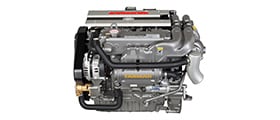 Recreational Marine
Recreational Marine
 Recreational Boat
Recreational Boat
 Premium Cruiser
Premium Cruiser
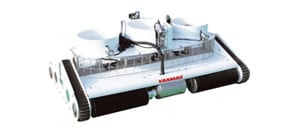 Marine Equipment
Marine Equipment
 Marine Commercial
Marine Commercial
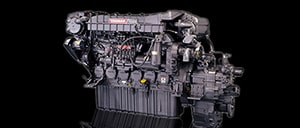 Propulsion Engines (High Speed)
Propulsion Engines (High Speed)
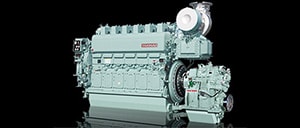 Propulsion Engines (Medium Speed)
Propulsion Engines (Medium Speed)
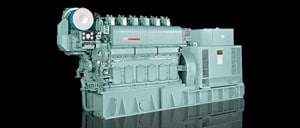 Auxiliary Engines
Auxiliary Engines
 SCR System
SCR System
 Dual Fuel Engine
Dual Fuel Engine
 Two-stage Turbocharging System
Two-stage Turbocharging System
 Electric Propulsion System
Electric Propulsion System
 Energy Systems
Energy Systems
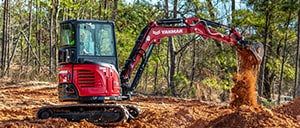 Compact Equipment
Compact Equipment
 Industrial Engine
Industrial Engine
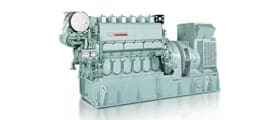 Power Generation
Power Generation
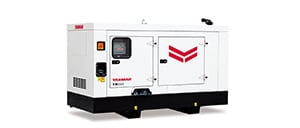 Compact Power Products
Compact Power Products